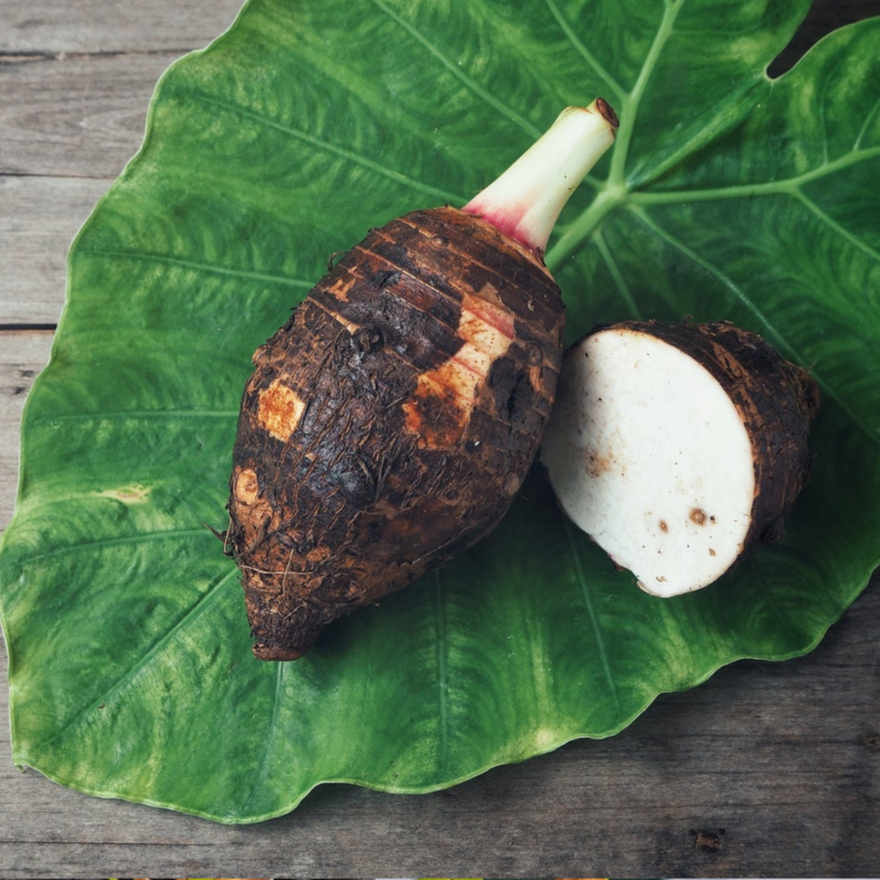rarefruittrees.ae
Aravi (Colocasia esculenta) - Seedling - LIVE PLANT
Aravi (Colocasia esculenta) - Seedling - LIVE PLANT
Couldn't load pickup availability
Plant Insights and Care
Aravi (Colocasia esculenta) — also commonly known as taro or arbi/arvi — is a tropical perennial grown for its edible starchy corms and large ornamental leaves. It is native to Southeast Asia and the Indian subcontinent, where it thrives in warm, humid environments with consistently moist soil.
Aravi grows 1–2 meters tall, forming broad, heart-shaped leaves that give a lush, tropical appearance. It performs well in hot climates as long as it receives regular moisture, protection from extreme afternoon heat, and rich, well-draining soil. While it loves moisture, it should not sit in flooded soil for long periods.
The plant prefers loamy or sandy-loam soil enriched with organic matter and a slightly acidic to neutral pH (6.0–6.8). Mulching helps conserve moisture and prevents heat stress. Fertilize monthly during active growth with a balanced fertilizer. Remove yellow or damaged leaves to keep the plant vigorous.
Key Points:
-
Origin: Southeast Asia and Indian subcontinent.
-
Climate: Warm, humid tropical; handles heat well if watered consistently.
-
Sun Exposure: Full sun to partial shade; afternoon shade recommended in extreme heat.
-
Watering: Keep soil evenly moist; avoid prolonged waterlogging.
-
Soil: Rich, well-draining loam with organic matter; pH 6.0–6.8.
-
Fertilization: Monthly balanced feed during the growing season.
-
Pruning: Remove old or yellowing leaves for better growth.
-
Growth Rate: Moderate to fast in warm conditions.
Edible & Leaf Profile
Aravi is valued for both its corms (underground tubers) and its large decorative leaves.
The corms are harvested when mature and must be cooked thoroughly to remove natural calcium oxalate crystals. Once cooked, the corms have a mild, slightly sweet, nutty flavor with a texture similar to potato or chestnut.
The leaves are broad, glossy, and heart-shaped — often reaching impressive sizes. They are edible when cooked properly and used in various traditional dishes across South Asia and Southeast Asia.
Dive into the facts:
-
Taste: Mild, slightly sweet, nutty; leaves mild when cooked.
-
Appearance: Large, umbrella-like green leaves; pale-fleshed edible corms.
-
Fun Fact: Aravi (or taro) is one of the oldest cultivated crops in the world and remains a staple in cuisines from India to Hawaii.
Share




